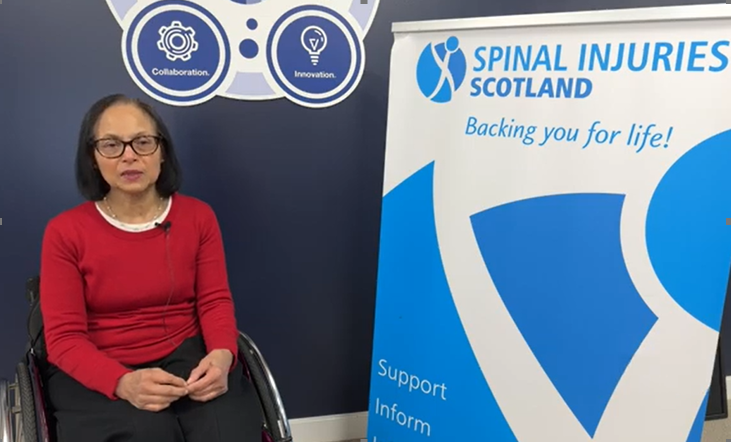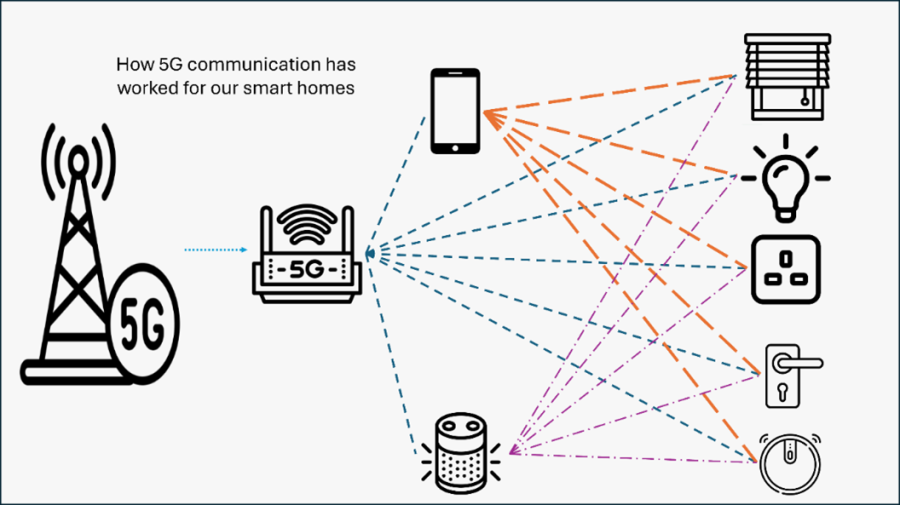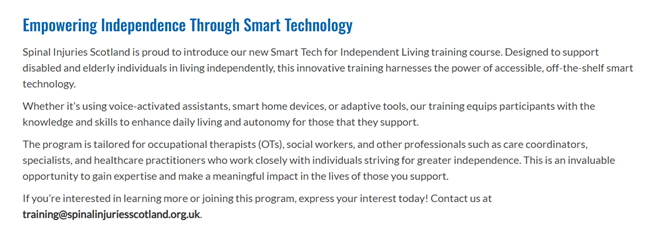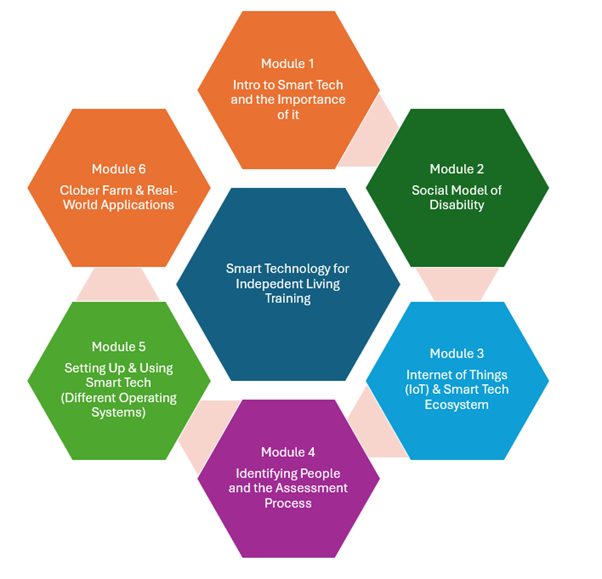Spinal Injuries Scotland - Glasgow City Region
Maureen Morrison
A 5G-enabled smart home project supporting individuals with spinal cord injuries to live independently through assistive technology, real-time connectivity, and personalised care environments designed for post-discharge rehabilitation.
Funded by the Department of Science Innovation and Technology (DSIT) as part of the 5GIR programme, Glasgow City Region (GCR) utilised circa £750,000 to develop an innovation scheme, ensuring rapid outcomes within an 8-month period across the 5G Glasgow City Region (GCR) between September 2004 and March 2025. As part of the Smart and Connected Social Places Program, the Spinal Injuries Scotland smart home, showcases how 5G enabled technology supports independent living for the disabled, elderly and those needing additional support to stay in their own home.
This collaborative project delivers smart, connected home environments using 5G-enabled assistive technologies to support people living with a spinal cord injury. Each solution is tailored to the unique needs of the individual, enabling greater autonomy and enhancing their physical, mental, and social well-being following discharge from hospital.Led by Spinal Injuries Scotland, in partnership with Vodafone, NHS Scotland, and Glasgow City Council Social Services, the initiative equips homes with technology designed to aid daily living and manage long-term care needs. Alongside installation, the project includes personalised training to ensure individuals can confidently use the tools provided. By focusing on rehabilitation at home, this model provides a replicable blueprint for digitally enabled care, helping to reduce hospital readmissions and improve quality of life across Scotland.
What is the Problem to be solved?
People living with a spinal cord injury (SCI) in Scotland face significant barriers to independent living following discharge from hospital. Every year, approximately 400 individuals sustain a spinal cord injury, with many requiring wheelchairs or experiencing severely reduced mobility. In addition to physical challenges, SCI can also lead to emotional and social isolation, reduced access to services, and increased vulnerability at home. Despite excellent care provided during hospital stays, the transition to home life remains a difficult and often unsupported process.
What is the solution to the problem?
The solution implemented through this project involves the creation of digitally enabled care environments using smart home technologies supported by 5G and advanced wireless connectivity. These environments were tailored to meet the unique needs of 12 individuals living with spinal cord injuries, helping them regain control over their daily routines and live more independently.
Commercial model (Business Case)
The Smart Support for People Living with a Spinal Cord Injury project provides a cost-effective, scalable solution to some of the most pressing challenges faced by individuals with complex mobility and care needs. The project demonstrates that investment in smart home technologies, supported by advanced wireless connectivity, can yield substantial returns by reducing the long-term reliance on formal care services and improving health outcomes.
Benefits
The Smart Support for People Living with a Spinal Cord Injury project has delivered a broad spectrum of benefits, improving both individual outcomes and the wider care delivery model:
Financial
- Reduced reliance on paid carers due to improved self-management, particularly for everyday tasks such as lighting, appliance operation, and communication.
- Decrease in unplanned care interventions and hospital admissions, resulting in cost avoidance for social care budgets.
Lessons Learnt
Do’s
- Co-design with end users: Collaborating directly with individuals living with spinal cord injuries during the planning and implementation phase ensured the technology met their real-world needs and preferences.
- Provide tailored training and support: One-to-one onboarding, accessible language, and patience during workshops were essential to building confidence and encouraging adoption.
- Ensure ongoing support mechanisms: Post-installation support and troubleshooting were highly valued and should be included as standard in similar projects.
- Plan for scalability: The modular approach and use of commonly available smart technology make it easier to scale to other regions or service groups.
- Build strong multi-agency partnerships: Collaboration between SIS, Vodafone, NHS Scotland, and Glasgow City Council created a well-rounded support network that improved the quality and speed of delivery.
- Document and share success: Capturing participant stories and outcomes helped secure further interest and promote the value of the initiative across health and care sectors.
- Don’ts
- Do not underestimate digital literacy barriers: Even basic technology can be unfamiliar. Assumptions about participants’ digital confidence should be avoided, and adequate time must be built in for familiarisation.
- Avoid one-size-fits-all solutions: Each individual’s home environment and needs were different. Flexibility in equipment choice and setup was essential.
- Do not overlook the emotional impact: Participants shared how technology helped address social isolation and mental well-being. These outcomes should be considered as core goals, not secondary benefits.
- Do not neglect data privacy and consent: All smart home systems should be implemented with clear, robust processes for informed consent, privacy, and data handling, especially where participants are considered vulnerable.
Do not delay engagement with frontline services: Early engagement with local authority and health professionals reduced duplication, enabled referrals, and ensured buy-in from the start.
Image
If you’re ready to embark on a connectivity project, we can point you to the suppliers with expertise in your sector.




